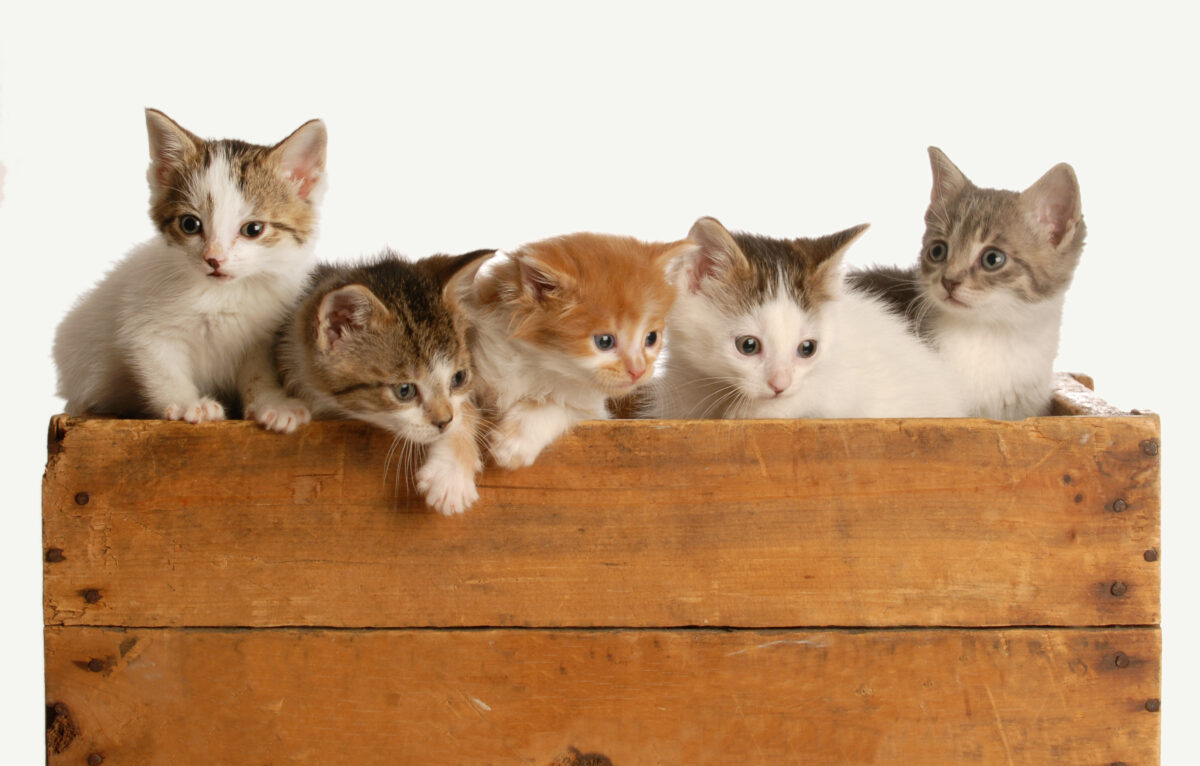Indoor female cats in heat or male cats seeking romance will surprise you, finding ways to slip out of the house. It’s as if they stay up all night formulating a complex plan. “When he opens the door to get the mail, I meow here and then when he is distracted and looks away, I make a break for it!” Of course, cats don’t engineer complex plans to speed date, but when hormones do their dance, there is only one thing on feline minds: mating.
Increasingly, the overwhelming majority of people with indoor cats spay or neuter their pets. Some intend to do it but stumble on misinformation online or put off scheduling “the deed” until the cat goes into heat.
“One problem is that people can wait too long, unaware that, oops, some kittens start to cycle as early as five months, and many at six months,” says Brian Holub, DVM, chief medical officer at VetCor. “So, before you know it, Mother Nature takes over.”
Living with an intact cat, male or female, is a challenge. Knowledgeable breeders are well equipped to prevent escape artists and to deal with normal behavior for intact cats, from spraying to caterwauling into the wee hours, but most pet cat parents are unprepared for the piercing cat calls and pungent blasts of urine delivered onto furniture, walls, or other surfaces.
The unpleasant behavior can fracture the human-animal bond through no fault of the cat. Julie Levy, DVM, who with Kate Hurley, DVM, cofounded the Million Cat Challenge, a shelter-based campaign that has saved millions of cats in shelters across North America, says many intact cats land in shelters for behaviors that would never have occurred if the cats were spayed or neutered. Sometimes intact cats are given the boot and put outdoors. Of course, all that does is add to an overpopulation problem
What’s more, Dr. Holub points out, unlike female dogs who generally experience estrus twice a year (some dogs three times a year and some only once annually, depending on breed or mix), female cats can have frequent heat cycles—as often as every two to three weeks until they ovulate. And intact males are always ready to rock.
Most females require three to four matings within a 24-hour period for ovulation to occur. It takes only a minute or two for cats to mate, and cats may mate multiple times in a very short period of time.
So why doesn’t everyone get cats “fixed” as early as possible? The traditional concern has been health risks to kittens associated with spay/neuter surgery by five months. Getting bits and pieces of information from the internet can lead to misunderstandings. For example, over the past several years, researchers have demonstrated that for some dog breeds spayed/neutered early (the definition of “early” varies by size and breed) there may be an increased risk of some types of cancers later in life.
But cats are not small dogs. Holub, who is also on the scientific advisory board and board of directors for EveryCat Health Foundation (formerly Winn Feline Foundation), notes that studies funded by EHF have repeatedly demonstrated that early spay/neuter of kittens isn’t a medical concern.
Dr. Levy, Fran Marino Professor of Shelter Medicine Education at the University of Florida College of Veterinary Medicine, Gainesville, agrees. She says kittens can easily be spayed/neutered at two pounds or eight weeks. “Surgery is easier, quicker, and less painful for the cat if it is done before five months, and the recovery is sometimes almost immediate; they often wake up ready to play. Today, we know shelters, who are eager to find pet homes, can spay/neuter at 1.5 pounds and as early as six weeks, and there are no serious safety issues.”
Besides reducing overpopulation, there are many medical reasons to spay/neuter. Dr. Levy says, “Spaying before the first heat dramatically reduces the chances of mammary cancer and reduces uterine infections. Those uterine infections can cause cats to urinate outside their litter boxes, which can lead to relinquishment and ultimately euthanasia.”
As intact cats’ uterine lining begins to prepare for a potential pregnancy, it thickens. If no pregnancy occurs, the lining is supposed to thin out again, but some cats will instead experience abnormal cystic growth. This creates an ideal environment for bacteria to grow, and when it does, the result is called pyometra, an infection of the uterus.
The preferred treatment is to surgically remove the uterus and ovaries, by performing an ovariohysterectomy (spay). Cats diagnosed in the early stage of the disease are good surgical candidates. Still, pyometra surgery is more complicated than a routine spay, so recovery may take time.
Spay/neuter does have its downside, as metabolism reduces, appetite increases, and activity decreases. This triad significantly contributes to obesity in about 60 percent of indoor cats in the U.S.
As a result of all the tubby tabbies, there’s an epidemic of diabetes in cats, not to mention a wide array of other problems caused by excess weight, ranging from arthritis to behavioral problems.
Dr. Levy says, “Medicine isn’t always straightforward. In this instance, there may be a cause and effect. But it doesn’t need to be this way. We need to stop free-feeding cats; understand the right diet choices; and provide enriched environments. It’s our responsibility – yes – to spay/neuter, but that responsibility of being a good cat parent doesn’t end there.”
This article was reviewed/edited by board-certified veterinary behaviorist Dr. Kenneth Martin and/or veterinary technician specialist in behavior Debbie Martin, LVT.








